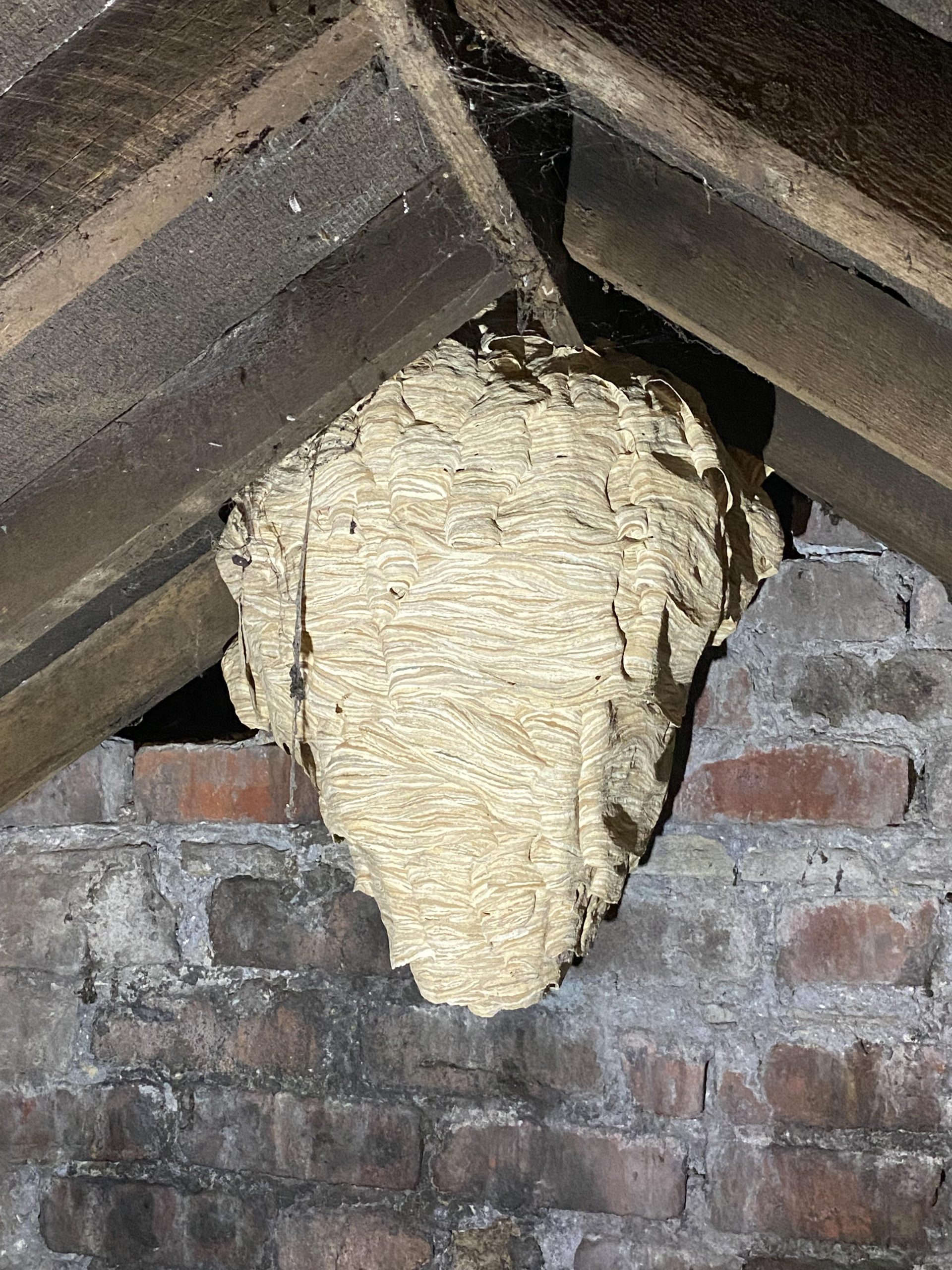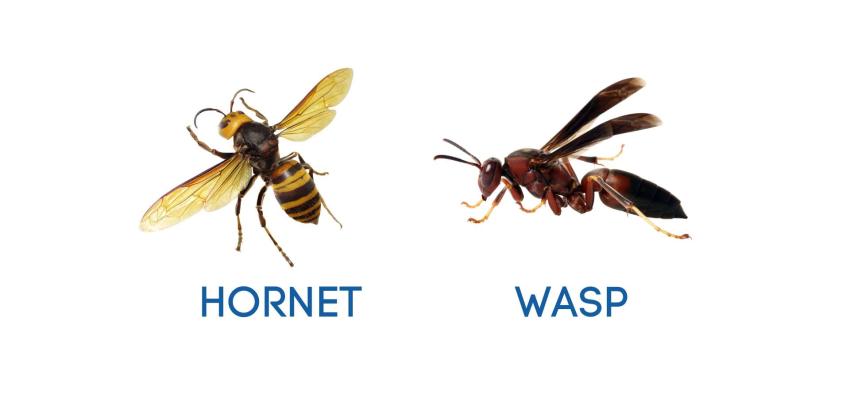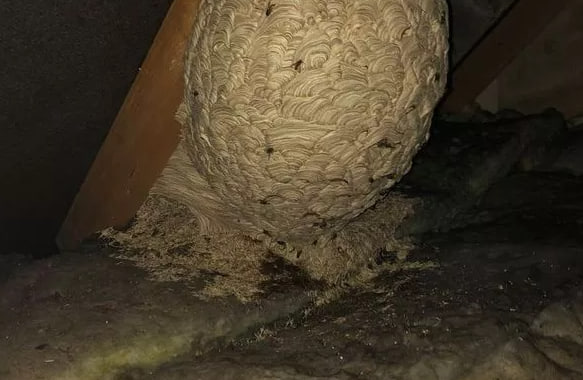Unexpected Discovery: A Giant Hornet Nest Lurking in a UK Home
In a surprising turn of events, Les Stagg, a UK homeowner, experienced a moment that transformed an ordinary day into a terrifying encounter with nature. While he prepared to wash his car one sunny afternoon, he noticed some unusually large insects flitting about near his roofline. Initially dismissing them as mere wasps, he soon realized that he was facing a much larger problem. After consulting with a local pest control expert, Stagg was shocked to learn that a massive hornet’s nest was hidden away in his attic, a discovery that would leave both him and the pest control team astounded.
A Routine Task Becomes a Cause for Alarm
Les’s day began like any other, characterized by the simple task of washing his car. However, as he went about his chores, he couldn’t help but notice a few large insects buzzing ominously near the eaves of his home. At first glance, these insects appeared harmless, and like most homeowners, he thought little of it. However, a sense of caution kicked in when he observed what looked like a compact nest tucked away near the roofline. Not wanting to take any chances, Les decided to contact a pest control service to investigate the matter further.
Upon arrival, the pest control technician donned her protective gear and gingerly ventured into the attic. What she discovered was nothing short of breathtaking – a hornet’s nest of extraordinary size, teeming with dozens of hornets. According to the technician, it was the largest nest she had ever encountered in her extensive career. Stagg was equally taken aback, exclaiming, “I only ever saw a few hornets flying around. I never imagined there was something that big right above my head.” This startling realization underscored the potential dangers hidden within the walls and ceilings of homes.

Understanding the Distinction: Hornets vs. Wasps
Many people are often confused by the similarities between hornets and wasps, as both belong to the same family of insects. However, there are distinct differences that can help homeowners identify them. First and foremost, hornets are generally larger than wasps, with some species reaching nearly 2 inches in length. They also exhibit a more robust physique with distinctive coloration, often featuring shades of brown, orange, or yellow. In terms of nesting, hornets tend to build larger, layered nests that can resemble a ball, while wasps typically create smaller, papery structures.
Perhaps one of the most significant differences lies in their behavior. Hornets can be more aggressive and protective of their nests, particularly when they sense a disturbance. Given the enormous size of the nest discovered by Stagg, it became evident that he was dealing with a colony of hornets, which posed greater risks compared to a typical wasp nest. This incident serves as a potent reminder of the importance of understanding these distinctions, especially when it comes to dealing with insect infestations in and around the home.
The Dangers of Hornet Nests
While a single sting from a hornet can be painful, for the majority of individuals, it is rarely life-threatening. However, hornet colonies represent a more nuanced danger. Disturbing a nest can provoke an entire swarm of hornets, leading to multiple stings that can result in severe pain, swelling, and in rare cases, life-threatening allergic reactions. Hornets are known to emit alarm pheromones when threatened, which can attract even more hornets to defend their territory. Therefore, pest control experts strongly advise against attempting to remove hornet nests independently.

Why Professional Removal is Essential
When the pest control team assessed Les’s attic, they adopted a meticulous, step-by-step approach to ensure safety. Equipped with protective gear and specialized equipment, they successfully neutralized the hornets and removed the nest without incident. The dangers of DIY removal are numerous; approaching a nest without the right protection can provoke hornets, potentially resulting in numerous stings. Additionally, improper handling can lead to structural damage if nests are located in attics, walls, or roofing. Leaving any remnants of the nest or colony can also allow hornets to recolonize quickly.
A Cautionary Tale for Homeowners
Experts indicate that large hornet colonies often go unnoticed until they become significantly established. Since nests are frequently constructed in concealed areas such as attics, sheds, wall cavities, or tree hollows, homeowners may only become aware of the issue when they observe a marked increase in insect activity. To mitigate risks, pest control specialists recommend that homeowners undertake regular inspections of rooflines, attics, and sheds during the warmer months. Observing multiple large insects entering and exiting a single location can indicate the presence of a nest. It’s crucial to act swiftly by contacting professionals to manage potential infestations before they expand uncontrollably.
Reflections on Les’s Experience
What began as a routine household chore evolved into a startling discovery that could have resulted in dire consequences if left unchecked. Les’s experience serves as a poignant reminder that vigilance is key when it comes to unusual insect activity. “I’m just glad I called someone when I did,” Les reflected. “I can’t imagine what would have happened if we’d left it any longer.” This encounter underscores the importance of remaining alert and proactive in addressing potential pest issues.
In Conclusion: Awareness is Key
The startling discovery of a giant hornet’s nest in Les Stagg’s attic offers a critical lesson for homeowners: pests can thrive unnoticed in hidden spaces, and neglecting the signs can lead to serious consequences. While hornets play a role in our natural ecosystem, their presence inside residential properties can pose real threats. By staying vigilant, clearly identifying the differences between wasps and hornets, and seeking professional assistance, homeowners can effectively protect their families and homes from similar unsettling surprises. For Les, the experience, though unsettling, serves as a valuable cautionary tale, illustrating how the most significant dangers can often be lurking just above our heads.

















